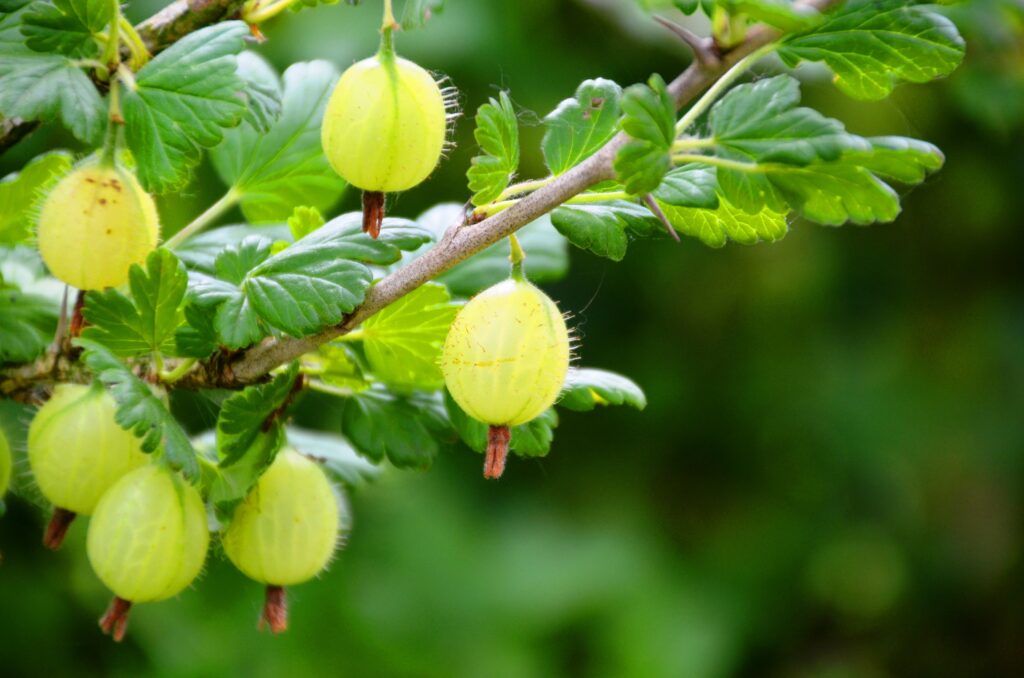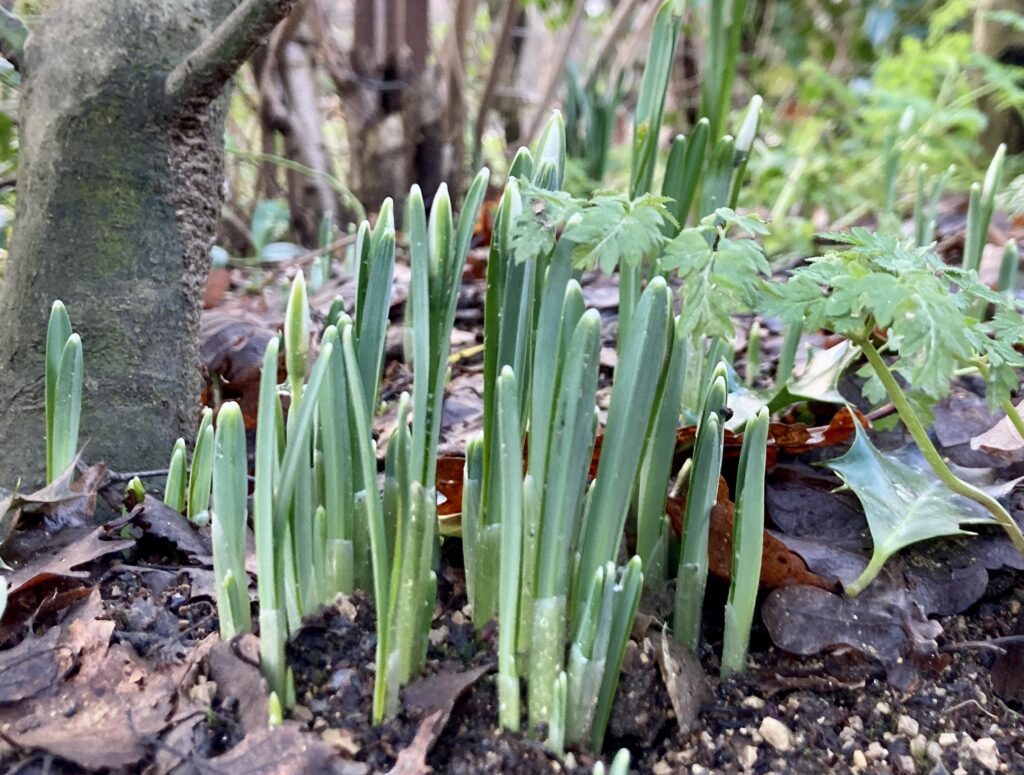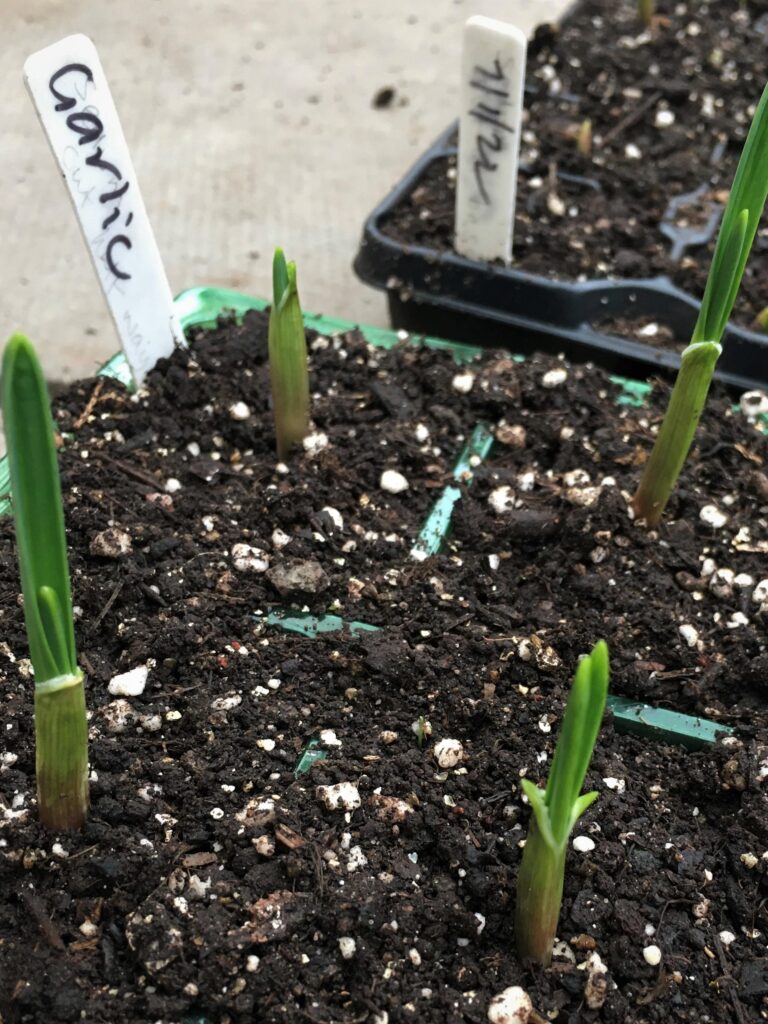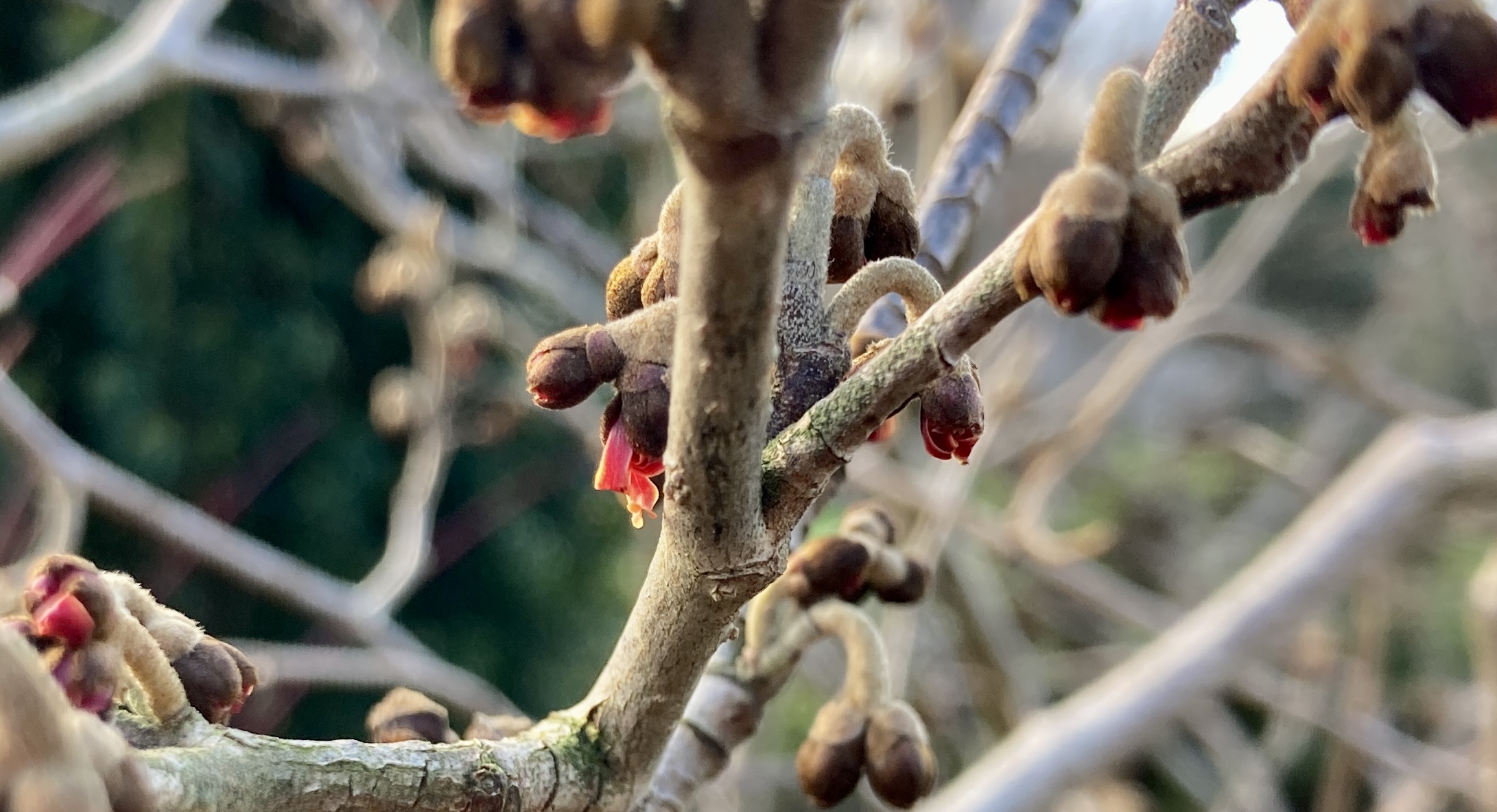Our Head Gardener Paula, recounts the many wonders of our winter garden in her nature diary, and inspires us to look more carefully and appreciate the beauty of nature all year long.
“We are beginning a new year, and the days are lengthening, even if it is by just a few minutes each day. Bulbs are poking through the leaf litter and buds are beginning to swell on the shrubs. The blooms of the winter flowering shrubs are subtle – Witch Hazel (Hamamelis mollis) and Sweet box (Sarcoccoca confusa) along the white seat border – but both have the added bonus of scent to enjoy.
Gardening tips
This is the perfect time to prune gooseberries, blackcurrants and redcurrants bushes, and make new plants at the same time. First, remove any dead or crossing branches then aim to open up the centre of the bush to allow air to flow, reducing the chance of disease and letting light in to ripen fruit. Prunings can then be used as cuttings to make new plants:
- Select nice straight stems about 10-20cm long and about a pencil thickness.
- Cut the top at an angle and the bottom straight across so that you remember which way up to plant it!
- Place the cuttings around the edge of a pot filled with gritty peat free compost, burying them deeply so only a couple of cm are above the compost
- They don’t need any extra heat, just put them outside somewhere with a bit of shelter, and leave them until autumn when they can be potted up individually
- Plant out in their final position the following spring (or swap with friends!)

Nature notes
Are you curious about what effect the recent weather has on wildlife, and does climate change affects timings in nature? Nature’s Calendar is a long running biological recording scheme that has been going since 1736, and it’s easy for everyone to take part. You will be helping scientists discover the answers to these questions while finding out what’s happening in your local area, from first snowdrops, to leaf buds bursting and brambles ripening.
The website Nature’s Calendar (woodlandtrust.org.uk) is full of useful information and signs to look out for in January. We are eagerly watching our snowdrops poke through the leaf litter and they will be flowering soon (21st January last year, will there be changes this year?) Other things to look for in January are hazel catkins, elder leaf burst and singing song thrushes.

Growing notes
It is very tempting to rush into seed sowing but light levels, air temperature and day length are still too low to grow strong healthy plants. Germination may be successful in a heated greenhouse or on a warm windowsill but the plants will struggle in the winter light and will become weak and leggy as they reach upwards in search of light. It is much better to spend some time planning and researching, leafing through catalogues and searching websites for ideas for the coming growing season.
If you are planning to grow some edibles this year, consider selecting open pollinated seeds, rather than F1 hybrids that result from years of inbreeding to produce a standard uniform crop. Gardeners and allotmenteers benefit from the slights variations found in open pollinated seed. This means not everything ripening and maturing at the same time (who can eat a row of cabbages all at once!), plants can adapt to varying weather patterns and a changing climate, and over the years collected seed will produce plants that are adapted to your own environment. You will also save on future seed purchases and you will have seed to swap or share with friends. https://www.realseeds.co.uk and Organic Seeds – Vital Seeds – We help you grow food – Buy online now are both good places to start and offer loads of useful tips on growing vegetables and collecting seeds.

If you are keen to get your hands dirty, there is still time to plant garlic as it needs a spell of cold to stimulate growth (which is why you shouldn’t keep your garlic in the fridge!). Buy garlic bulbs from a garden centre or online as supermarket bulbs can spread disease and may not be reliable to grow in this country. Choose cultivars suitable for Spring planting and look out for Hardneck varieties. Although they don’t store so well as Softneck cultivars, they have a stronger flavour and produce ‘scapes’ or flowershoots which can be harvested in early summer, excellent for making garlicky pesto!

